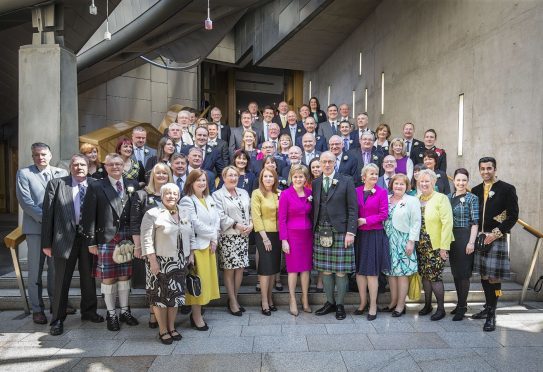Holyrood’s new MSPs have been sworn in for the fifth session of the Scottish Parliament.
All 129 members took the oath or made a solemn affirmation in the parliament’s chamber, with outgoing presiding officer Tricia Marwick overseeing proceedings.
Newly-elected representatives from north and north-east Scotland were among more than a dozen who chose to make the pledge in Doric, Gaelic or Scots.
North East Tory Peter Chapman chose to speak in Doric, as did the SNP’s Gillian Martin, Mark Macdonald and Kevin Stewart.
Several Highlands members made their commitment in Gaelic, including the Green’s John Finnie and the SNP’s Kate Forbes, Maree Todd and Alasdair Allan. The Nationalists’ Mike Russell spoke in both Scots and Gaelic.
SNP leader Nicola Sturgeon was first to be sworn in, underlining her party’s “loyalty to the people of Scotland” and the “sovereignty of the people” before taking the affirmation.
She was followed by Scottish Conservative leader Ruth Davidson and Scottish Labour counterpart Kezia Dugdale.
Ms Davidson’s party took up the benches previously used by Labour after becoming the second largest party with 31 seats in the chamber.
Greens co-convener Patrick Harvie prefaced his affirmation – which includes swearing allegiance to the Queen – by highlighting his party’s support for an “elected head of state”.
Liberal Democrat leader Willie Rennie was sworn in wearing a large yellow rose on his lapel, while the Tories opted for thistles, Labour for red roses and the SNP the “white rose of Scotland”.
The rose was the subject of Hugh MacDiarmid’s famous poem The Little White Rose, and has been worn by SNP members when they are sworn in at Holyrood since 1999.
Party leaders were followed by MSPs in alphabetical order.
SNP MSP for Glasgow Pollok Humza Yousaf was the final member to be sworn in and took the oath in Urdu, reflecting his Pakistani heritage.










